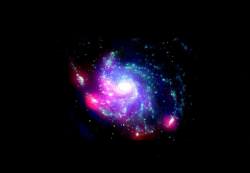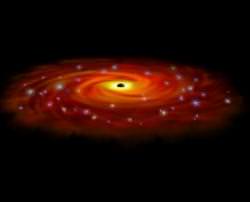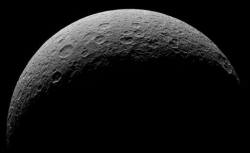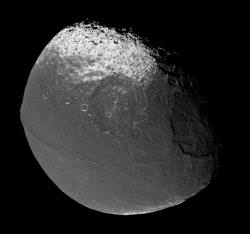Monday, September 10 – Today is the birthday of James E. Keeler. Born in 1857, the American Keeler was a pioneer in the field of spectroscopy and astrophysics. In 1895, Keeler proved that different areas in Saturn’s rings rotate at different velocities. This clearly showed that Saturn’s rings were not solid, but were instead a collection of smaller particles in independent orbits.
While we are studying some of the summer’s finest objects, we’d be very remiss if we didn’t look at another cosmic curiosity – “The Blinking Planetary.” Located a couple of degrees east of visible star Theta Cygni, and in the same lower power field as 16 Cygni, it is formally known as NGC 6826.
Viewable in even small telescopes at mid to high power, you’ll learn very quickly how its name came about. When you look directly at it, you can only see the central 9th magnitude star. Now, look away. Focus your attention on visual double 16 Cygni. See that? When you avert, the nebula itself is visible. This is actually a trick of the eye. The central portion of our vision is more sensitive to detail and will only see the central star. At the edge of our vision, we are more likely to see dim light, and the planetary nebula appears. Located around 2,000 light-years from our solar system, it doesn’t matter if the “Blinking Planetary” is a trick of the eye or not… Because it’s cool!
Also known as Herschel IV.73 and Caldwell object 16, this tiny planetary shows an abundance of carbon and dust pockets in its structure. It skyrocketed to fame when viewed by the Hubble Space Telescope which revealed the mysterious red “FLIERS,” whose bow shocks point towards this planetary nebula – instead of away from it.
Tuesday, September 11 – For viewers in South America, you’re in for a partial solar eclipse on this Universal date. Be sure to check local information for precise times and viewing locations. Wishing you clear skies!
Today celebrates the birthday of Sir James Jeans. Born in 1877, English-born Jeans was an astronomical theoretician. During the beginning of the 20th century, Jeans worked out the fundamentals of the process of gravitational collapse. This was an important contribution to the understanding of the formation of solar systems, stars, and galaxies.
Tonight is New Moon and a great opportunity to have another look at all the things we’ve studied this week. However, I would encourage those of you with larger binoculars and telescopes to head for a dark sky location, because tonight we are going on a quest…the quest for the holy “Veil.”
By no means is the Veil Nebula Complex an easy one. The brightest portion, NGC 6992, can be spotted in large binoculars and you can find it just slightly south of a central point between Epsilon and Zeta Cygni. NGC 6992 is much better in a 6″ scope however, and low power is essential to see the long ghostly filaments which span more than a degree of sky. About two and a half degrees west-southwest, and incorporating star 52, is another long narrow ribbon of what may be classified as a supernova remnant. When aperture reaches the 12″ range, so does the true breadth of this fascinating complex. It is possible to trace these long filaments across several fields of view. They sometimes dim and at other times widen, but like a surreal solar flare, you will not be able to tear your eyes away from this area. Another undesignated area lies between the two NGCs, and the whole 1,500 light-year distant area spans over two and a half degrees. Sometimes known as the Cygnus Loop, it’s definitely one of late summer’s finest objects.
Wednesday, September 12 – Today in 1959, the USSR’s Luna 2 scored a mark as it became the first manmade object to hit the moon. The successful mission landed in the Paulus Putredinus area. Today also celebrates the 1966 Gemini 11 launch.
Tonight let’s take the time to hunt down an often overlooked globular cluster – M56.
Located roughly midway between Beta Cygni and Gamma Lyrae (RA 19 15 35.50 Dec +30 11 04.2), this class X globular was discovered by Charles Messier in 1779 on the same night he discovered a comet, and was later resolved by Herschel. At magnitude 8 and small in size, it’s a tough call for a beginner with binoculars, but is a very fine telescopic object. With a general distance of 33,000 light-years, this globular resolves well with larger scopes, but doesn’t show as much more than a faint, round area with small aperture. However, the beauty of the chains of stars in the field makes it quite worth the visit!
While you’re there, look carefully: M56 is one of the very few objects for which the photometry of its variable stars was studied strictly with amateur telescopes. While one bright variable had been known previously, up to a dozen more have recently been discovered. Of those, six had their variability periods determined using CCD photography and telescopes just like yours!
Thursday, September 13 – Today in 1922, the highest air temperature ever recorded at the surface of the Earth occurred. The measurement was taken in Libya and burned in at a blistering 136°F (58°C), but did you know that the temperatures in the sunlight on the Moon double that? Your first challenge for tonight will be to see if you can spot the slender crescent Moon right after sunset. If so, keep your binoculars on hand and look for Mercury about 2 degrees to the north. If you thought the surface of the Moon was a bit too warm for comfort, then know surface temperatures on the closest planet to the Sun can reach up to 800°F (427°C) at the equator during the day! As odd as it may sound, even that close to the Sun – Mercury could very well have ice deposits hidden below the surface at its poles.
Tonight we’ll move on to Aquila and look at the hot central star of an interesting planetary nebula – NGC 6804. You’ll find it almost 4 degrees due west of Altair (RA 19 31 35.17 Dec +09 13 32.0). Discovered by Herschel and classed as open cluster H VI.38, it wasn’t until Pease took a closer look that its planetary nature was discovered. Interacting with clouds of interstellar dust and gases, NGC 6804 is a planetary in decline, with its outer shell around magnitude 12 and the central star at about magnitude 13. While only larger telescopes will get a glimpse of the central, it’s one of the hottest objects in space – with temperatures around 30,000°K!
Friday, September 14 – Tonight as the Moon rises, look for the splendid appearance of Spica about 1.7 degrees to the north. Before it overpowers the sky, let’s use this opportunity to have a look at one of the prettiest clusters in the night – M11.
Discovered in 1681 by German astronomer Gottfried Kirch at the Berlin Observatory, M11 was later cataloged by Charles Messier in 1764 and first dubbed the “Wild Duck” by Admiral Smyth. To our modern telescopes and binoculars, there is little doubt as to how this rich galactic cluster earned its name – for it has a distinctive wedge-shaped pattern that closely resembles a flight of ducks. This fantastic open cluster of several thousand stars (about 500 of them are magnitude 14 or brighter) is approximately 250 million years old.
M11 is easily located by identifying Altair, the brightest star in Aquila. By counting two stars down the “body” of Aquila and stopping on Lambda, you will find your starhop guide. Near Lambda you will see three stars, the centermost is Eta Scuti. Now just aim! Even small binoculars will have no problem finding M11, but a telescope is required to start resolving individual stars. The larger the telescope’s aperture the more stars will be revealed in this most concentrated of all open clusters!
Saturday, September 15 – In 1991 the Upper Atmosphere Research Satellite (UARS) was launched from Space Shuttle Discovery. The successful mission lasted well beyond its life expectancy – sending back critical information about our ever-changing environment. After 14 years and 78,000 orbits, UARS remains a scientific triumph.
Tonight your lunar mission is to journey to the edge of the east limb and slightly south of central to identify crater Humboldt. Seen on the curve, this roughly 200 km wide crater holds a wealth of geographical details. Its flat, cracked floor has central peaks and a small mountain range, as well as radial rille structure. If libration and steadiness of skies are in your favor, power up and look for dark pyroclastic areas and a concentric inner crater.
Now, let’s have a look at Beta and Gamma Lyrae, the lower two stars in the “Harp.” Beta is actually a quick changing variable which drops to less than half the brightness of Gamma in around 12 days. For a few days the pair will seem of almost equal brightness and then you will notice the star closest to Vega fades away. Beta is one of the most unusual spectroscopic stars in the sky, and it is possible that its eclipsing binary companion may be the prototype of the “collapsar” (yep, a black hole!), rather than a true luminous body.
Sunday, September 16 – If you were unable to identify Humboldt last night, try again tonight with Petavius as your guide. Although we have studied Petavius before, now is your chance once again to mark your studies of the Petavius Wall. Look for unusual features, such as 57 kilometer diameter Wrottesley on Petavius’ northwest wall, or 83 kilometer wide Hase to the south, with its deep interior impact… Or how about long, shallow Legendre and Phillips on Humboldt’s west wall? If libration is good you might even spot the edge of Barnard on Humboldt’s southeast edge!
While the Moon will dominate tonight’s sky, we can still take a very unusual and beautiful journey to a bright and very colorful pair of stars known as Omicron 1 Cygni. Easily located about halfway between Alpha (Deneb) and Delta on the western side, this is a pure delight in binoculars or any size telescope. The striking gold color of 3.7 magnitude 31 Cygni (Omicron 1) is easily highlighted against the blue of its same-field companion, 5th magnitude 30 Cygni. Although this wide pairing is only an optical one, the K-type giant is a double star – an eclipsing variable around 150 times larger than or own Sun – and is surrounded by a gaseous corona more than double the size of the star itself. If you are using a scope, you can easily spot the blue tinted, 7th magnitude B star about one-third the distance between the two giants. Although our true pair are some two billion kilometers apart, they are oriented nearly edge-on from our point of view – allowing the smaller star to be totally eclipsed during each revolution. This total eclipse lasts for 63 days and happens about every 10.4 years, but don’t stay up too late… We’ve still got five years to wait!










